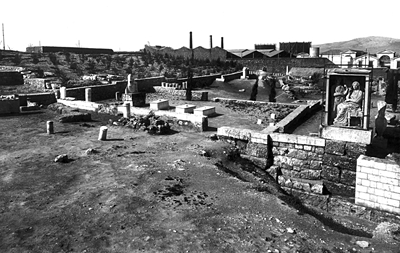October 2007 (111.4)
Article
Family Ideology and Family History: The Function of Funerary Markers in Classical Attic Peribolos Tombs
This article examines how Athenian funerary markers functioned within the context of classical Attic peribolos tombs, or family burial plots. An analysis of the relationship between burials and markers in the Corner Terrace tombs of the Kerameikos indicates that commemoration in family tombs did not intend to record all burial activity. Instead, selected circumstances of burial were used to present a constructed image of the family in the tomb. The interplay among funerary markers in family tombs suggests that commemoration likewise did not aim to identify clearly all commemorated individuals or trace the complete details of a family tree; rather, the tomb facade prioritized family connections more generally. The collection of funerary markers in a peribolos tomb, when taken together, paint a picture of a successful family that has escaped the kind of challenges that appear in the rhetoric of the Attic orators, such as the extinction of the family line, generational conflict, and improprieties in the behavior of women. Funerary markers in classical Attic family tombs express a generalized family ideology more than a specific family history in response to an increasing perception in late fifth and fourth century B.C.E. Athens that families were threatened.
